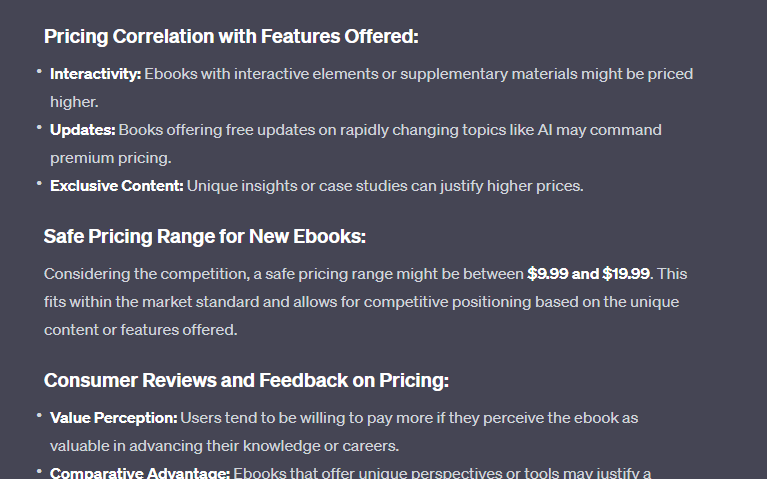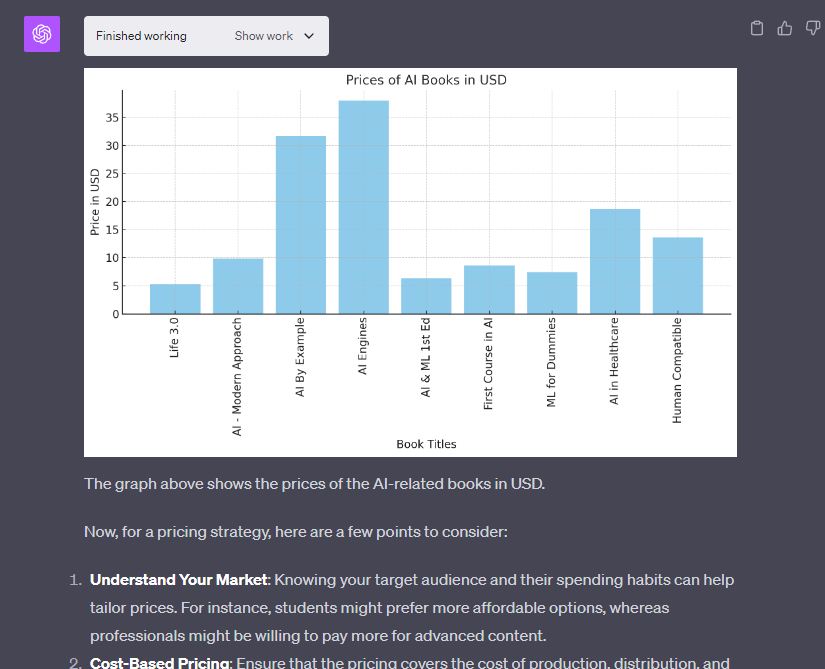
Free prompt in the article. In the rapidly evolving landscape of software and game development, determining an effective pricing model for your product or game can feel like maneuvering through a labyrinth with no clear exit. The challenge lies in hitting that sweet spot where your product is priced competitively yet still garners a profitable return. In this scenario, Artificial Intelligence (AI) emerges as a powerful ally in facilitating informed decision-making, with pricing strategies being a notable application. This article delves into how AI, with a spotlight on Large Language Models (LLMs) such as GPT (Generative Pre-trained Transformer), BERT (Bidirectional Encoder Representations from Transformers), and BARD (Bidirectional and Auto-Regressive Transformers), can serve as your navigational aid in making astute pricing decisions for your game or software.
Understanding LLMs and Their Pricing Prowess:
Large Language Models (LLMs) have significantly advanced the field of artificial intelligence, showcasing an outstanding ability to comprehend and produce human-like text. Their knack for sifting through massive data sets, unearthing key insights, and offering well-informed recommendations is unrivaled. In product pricing, these AI specialists prove to be invaluable allies, poised to assist in traversing the intricate terrain with a mix of accuracy and acumen
1. Market Research:
With LLMs at your helm, deciphering the desire of your target audience towards price modifications becomes significantly simpler. They meticulously analyze historical data, projecting how price adjustments could reverberate through your sales volume and revenue channels.
2. Price Sensitivity Analysis:

Having LLMs on your team makes it easier to figure out how your target audience might react to changes in price. They look at past data to predict how tweaks in price could affect your sales and revenue.
3. Competitive Analysis:
LLMs help check out what pricing tricks your competitors are using, and find chances for you to place your product smartly in the market. Got some cool features or an edge over others? LLMs help spotlight these perks.

4. Personalization:
AI’s knack for adjusting pricing plans according to different customer types is pretty great. By digging into how users behave, their buying histories, and what they like, LLMs help set flexible pricing which could lead to better sales and more revenue.
5. Forecasting:
LLMs are good at predicting market trends, helping you stay one step ahead whether it’s a change in demand, seasonal shifts, or new trending niches. This insight helps in tweaking your pricing strategies accordingly.
Building Trust in AI-Powered Pricing:
Handing over pricing decisions to AI might raise some eyebrows regarding transparency and ethical points. To build trust with users and stakeholders, here are some steps:
Explainability:
AI can make sense of loads of data in a way we can understand, which might be hard for us when dealing with so much information.
Bringing AI into your pricing strategy is like having a sharp lens that helps you see the market more clearly. These tools help make informed decisions, understand the market better, and free up your time for more creative stuff. AI is strong but it’s not magic, it works best when paired with human judgment.
Market Research Prompt:
(GPT-bing, Bard, Bing,)
Fill in the top
[product_type]:
[niche]:
[feature_1]:
[feature_2]:
[feature_3]:
[region]:
Conduct market analysis for a new product_type in the [niche] market. Identify and list prices of at least five competing products along with their pricing models. Compare pricing models and identify common pricing strategies. Analyze pricing structures and factors influencing them, focusing on correlation with features offered. Estimate a safe pricing range for the new product_type. Explore consumer feedback on pricing and gauge willingness to pay. Investigate historical pricing trends. Examine regional pricing variations in [region] and suggest a regional pricing strategy. Identify successful promotional pricing strategies and subscription models used by competitors, and analyze their effectiveness. Suggest adaptations of these strategies for the new product_type considering features feature_1, [feature_2], feature_3. Assess market demand correlation with pricing, and provide insights for competitive pricing of the new product_type.

